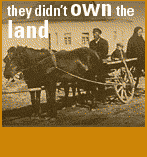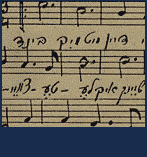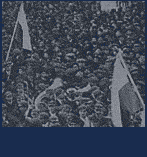

Religious Leaders
By far the most famous of all the city's scholars was Rabbi Elijah ben Solomon Zalman, better known as the Gaon of Vilna. Born in 1720 to a long line of rabbis, the Gaon (a Hebrew term for genius) was renowned for his keen critical understanding of Jewish texts and his innovative methods of Talmudic commentary, methods which considerably influenced Jewish scholarship. The Gaon, well educated in mathematics and secular science, required such knowledge of his disciples, whose numbers continued to grow significantly late into his life. He was famous for being a fierce Mitnaged, transforming the Vilna of his lifetime into a bastion of Mitnagdim, and firmly opposing the rise of Hasidism, which was said to be stopped at the gates of the city. It was not until after the Gaon's death that the Hasidim, following a long and bitter struggle, managed to secure the right to congregate within Vilna's Jewish precincts. One of the Gaon's most important legacies was his early attempt at repopulating Palestine with Jews. Although he did not succeed himself, some of his most devout followers formed an early brigade of emigrants to the Holy Land, long ahead of the Zionist  movement, which began in 1892 with the first Zionist Congress, and that would grip the Jewish world a century later.
movement, which began in 1892 with the first Zionist Congress, and that would grip the Jewish world a century later.
Another important religious figure in Vilna was its Chief Rabbi, Isaac Rubinstein, who was brought to the city in 1909 from Crimea in order to serve in his new post. Rubinstein was a prodigious scholar, deeply learned in religious and secular subjects. He was a passionate and impressive orator, fluent in Russian, Yiddish, and Hebrew, and, above all, an effective activist for Jewish causes. He used the Rabbinate not only to perform administrative duties such as officiating weddings or interpreting laws, as his predecessors had done, but also as a platform to improve the general lot of Lithuania's Jews. Lobbying tsars and politicians on the one hand, he also aroused Vilna's faithful during powerful sermons delivered each Sabbath. A tall and stately man with a commanding presence, Rubinstein was a reassuring figure for Jews, non-Jews, and even the most anti-Semitic leaders.
Politics
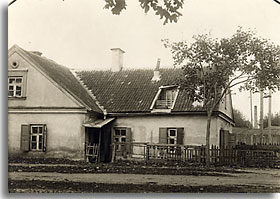

Vilna served as the headquarters for many of the major Jewish political movements of the 19th and 20th centuries. With the beginnings of Socialism during the mid-19th century (the Communist Manifesto was written in 1848), a previously apolitical and disenfranchised Jewish community suddenly was thrust into debate and passionate dialogue over politics and Jewish survival. New political parties and movements appeared with amazing frequency and diversity. Among the first of the movements to get organized was labor, which got its symbolic start in 1871 when tobacco factory workers organized a strike against poor conditions. This served to catalyze the proletariat - both Jewish and Polish - and began a gradual process of unionization. Particularly strong was the Bund movement -(The General Jewish Workers Bund of Poland, Russia and Lithuania), which first convened in Vilna in 1897. Its platform was pro-Yiddish, pro-Jewish national autonomy, and opposed to Zionism. Bundists were resolved to fight it out and change conditions for the better for all in the Diaspora, through educating working-class Jews in self-defense and organizing, and struggling for practical improvements for for the whole community. Finally, Vilna was also one of the world's most important Zionist strongholds, with every major group of the movement represented: Hovevei Zion  (Lovers of Zion), He-halutz
(Lovers of Zion), He-halutz  (the Pioneer Movement), Betar
(the Pioneer Movement), Betar  (from the Revisionist Zionist movement), and Ha-Shomer Ha-Tzair
(from the Revisionist Zionist movement), and Ha-Shomer Ha-Tzair  (the Young Marxist- Zionist Guard).
(the Young Marxist- Zionist Guard).
Printing and Press
Vilna was a major center of Hebrew printing and of the Jewish press, far out of proportion with its small size. It disseminated books and newspapers, ideas and scholarship to Jewish communities throughout Eastern Europe and across the world.
Hebrew printing was introduced in Vilna in 1799, and became a major industry before the middle of the 19th century. A number of small presses functioned over the course of the century, but the city's fame within the history of Hebrew printing stems from the enterprise run by the Romm family. The Romm company gained a nearmonopoly of Hebrew printing in Eastern Europe during the 1840s after other firms in the tsarist empire were closed by government censorship. The Romm Talmud  , finely printed with a multitude of commentaries, completed in 1854, remains one of the greatest achievements in the history of Hebrew typography.
, finely printed with a multitude of commentaries, completed in 1854, remains one of the greatest achievements in the history of Hebrew typography.
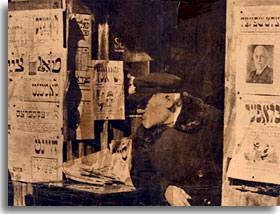

From the mid-19th century onward a Jewish periodical press sprouted as well, at first in Hebrew, most significantly Pirhe Tsafon, (1841), Ha-Karmel (1861), and Ha-Zeman (1905), an annual, a weekly, and a daily, respectively. Then, in the 20th century, Vilna also became a center of the Yiddish press. In 1929, five daily newspapers and one weekly, were publishing, including the widely read Vilner Tog. In the interwar period, Vilna was one of the three world centers of Yiddish publishing, along with Warsaw and New York. The publishing house founded in 1910 by B. Kletzkin issued the greatest works of modern Yiddish literature, including the classical writers and American Yiddish authors.











